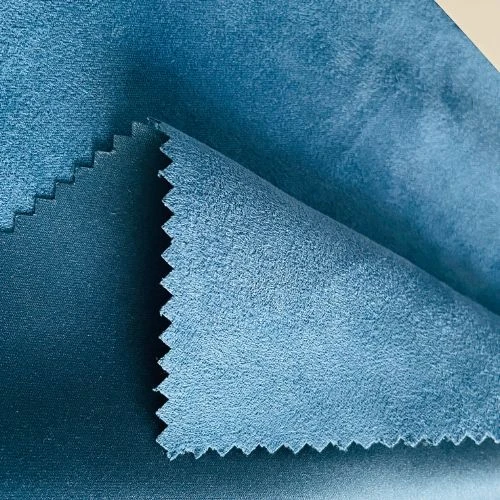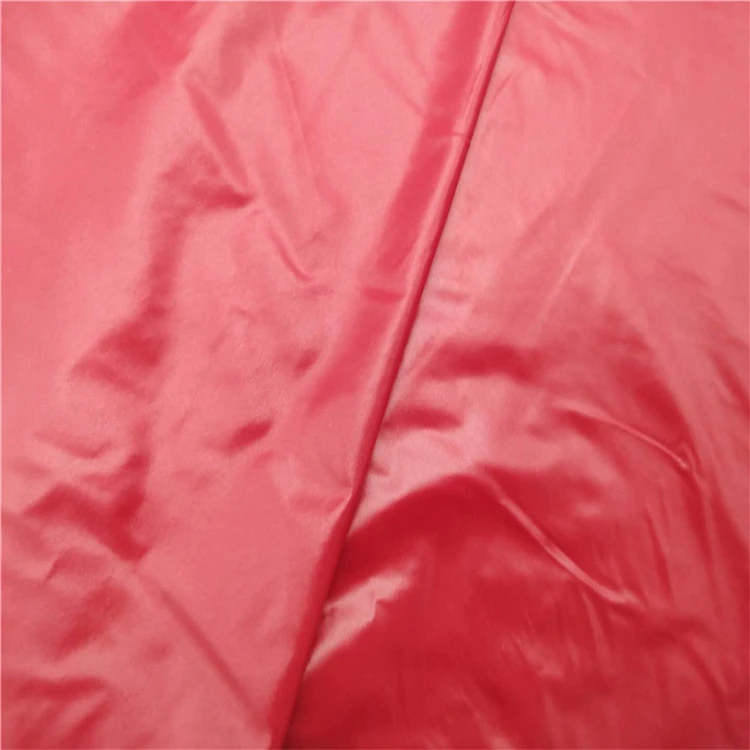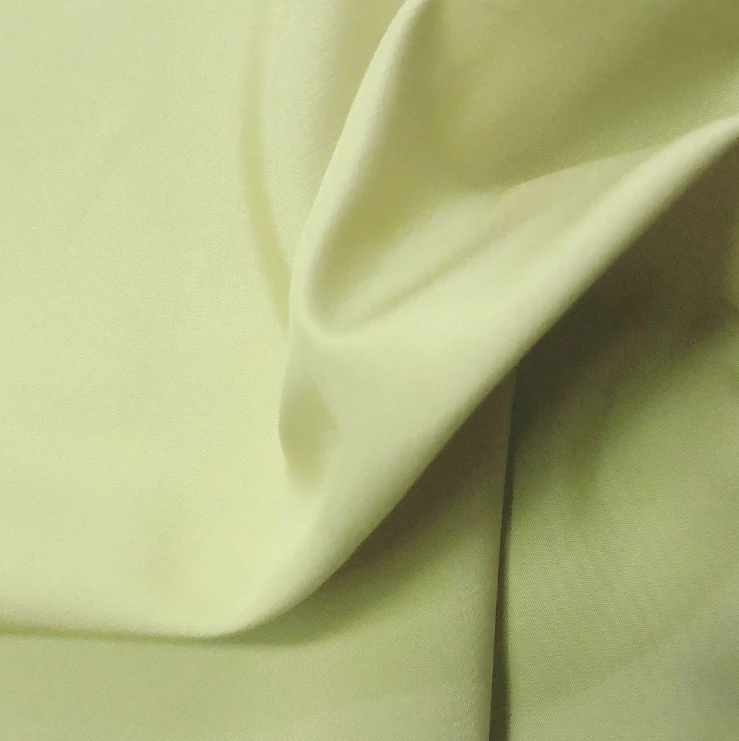|
Fabric |
Suede |
|
Reason for the name |
Named after the French term "gants de Suède," meaning "Swedish gloves." |
|
Also known as |
Microfiber suede, faux suede (if synthetic). |
|
Manufacturing Process |
Sanding or brushing the underside of animal hide (natural) or weaving and napping synthetic fibers (synthetic). |
|
Appearance |
Soft, smooth, and velvety surface with a matte finish. |
|
GSM Range |
150–400 GSM. |
|
Composition Range |
Natural: 100% leather (animal hide); Synthetic: 100% polyester, polyamide, or a blend. |
|
Construction Range |
Woven or knit, depending on application. |
|
Functionality |
Can be finished with TPU, PU, AC, water resistance (W/R), etc. |
|
Possible Thread Density Range |
200T–400T (for woven varieties). |
|
Count Variations |
Yarn count varies from 20s to 60s for synthetic variants. |
|
Full Width |
57/58", 59/60", or 71/73". |
|
Fabric Breathability |
Moderate (natural suede is less breathable than synthetic). |
|
Moisture-Wicking Abilities |
Low to moderate (improved in synthetic varieties with finishes). |
|
Heat Retention Abilities |
High, especially for natural suede. |
|
Stretchability |
Low to moderate (improved with synthetic blends). |
|
Prone to Pilling/Bubbling |
Low for natural; moderate for synthetic blends with heavy wear. |
|
Country of First Production |
Sweden (original inspiration) or France (commercial production), 19th century. |
|
Biggest Exporter Country |
China (exports over 40% of synthetic suede globally). |
|
Recommended Washing Temperatures |
Natural: Dry clean only; Synthetic: Machine wash cold (30°C). |
|
Applications |
Shoes, handbags, upholstery, gloves, jackets, apparel linings, and accessories. |
Table Of Contents
What is suede fabric?
Suede fabric is a type of leather with a fuzzy, napped, and velvety finish commonly used for making jackets, shoes, and furniture. It can be made from both genuine and artificial leather. Usually, genuine suede is made from animal skin. But nowadays suede is mostly made of artificial fibers like polyester microfiber by using weaving or knitting techniques that are further processed to give a matte surface. Polyester suede is more durable and easier to clean than genuine suede. But both genuine and artificial suede are very thin, soft, and comfortable.

Genuine suede is obtained from the inner surface of animal skin. Considering environmental impacts and animal rights, the use of real suede is decreasing daily at the industry level. Besides, genuine suede is costlier than polyester microfiber suede, so consumers prefer artificial suede to genuine leather suede.
Textile manufacturers have tried to create synthetic suede alternatives with various successes in an effort to reduce the impact on leather-producing animals and combat some of the suede's negative properties. Although it is impossible to replicate suede's desired properties truly, synthetic options may be less expensive or more durable than the original.
Types of Suede Fabric:
Plenty of leathers and a variety of side skins are available depending on the animal's privacy.
Sheepskin Suede

Originally made from lambskin skins. This excrement has a brushed textured side with a wide range of light and light types of sides in a velvet flap. Although the side, as mentioned above, is not waterproof. Sheepskin cases are great for maintaining cool air and dampness during the winter months.
Cowhide Suede

Like sheepskin, calves have a much softer cover than fully-grown cows. Creating a suede with thick naps is not as popular as previous options. Still, it can make very durable skin if you are after being incredibly long-lasting.
Pigskin Suede

Pigskin is not as popular as sheepskin. The texture is very firm and firm. It can still be used to make suede but is much less soft than the surface, and it is usually more durable than other cases.
What is Suede Made of?
Genuine suede is made of leather which is usually found in the lambskin. Today, artificial or fake suede is made of polyester microfibers that are woven or knitted to give a suede look. However, the difference between suede fabric and other leather is that the leather used in this fabric is produced under animal skin. The underside of the animal's skin is much softer than the outside. Still, the bottom of the skin is also more resistant to ingredients and stains.
The suede finish has an animal-like effect when using the thick cover of old cow and deer, the nature of the fiber results in a lot of jerks that are not as soft as light suede. The 'nep' of cloth is the raised surface of the ground. As a result, short hairs cover the top of the material.
Properties:
|
Fabric Name |
Suede |
|
Breathability and Stretchability |
Low |
|
Moisture-wicking abilities |
Low |
|
Prone to bubbling |
Low |
|
Heat retention abilities |
High |
|
Commonly used |
Jackets, Shoes, Gloves, Belts, Hats, Handbags |
|
First producing country |
Sweden |
What is Suede Fabric used for?

Suede fabric is used in making different garments as well as in a variety of different accessory applications. Since this Fabric is relatively fragile, it is not very effective in industrial applications. Its uses are discussed below_
- For Apparel: The use of Suede Fabric for regular wear is not too eye-catching. However, this Fabric is usually used to make various jackets. Since it is relatively water-resistant, it is used more in making jackets. In addition to jackets, their use can also be noticed in making various winter clothes.
- For Shoe Production: Suede fabric is mainly used for dress shoe production. This Fabric is not useful for any outdoor shoe applications because it is delicate, absorbs water, and is minded to stain.
For Accessories: Suede Fabric is also used in handbag design. The softness and unique texture of this Fabric makes it desirable in this application. Like most designer accessories and clothing items, suit handbags are not designed for everyday or heavy-duty applications.


























Comments - 00
Leave A Reply
Thanks for choosing to leave a comment.